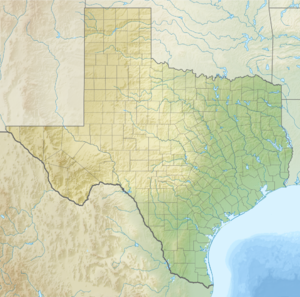Call Field
| Call Field | |
|---|---|
| Wichita Falls, Texas | |

A Field of Standard J-1's at Call Field, Wichita Falls, Texas, 1918
|
|
| Coordinates | 33°52′18″N 98°33′18″W / 33.87167°N 98.55500°WCoordinates: 33°52′18″N 98°33′18″W / 33.87167°N 98.55500°W |
| Type | Pilot/Observer training airfield |
| Site information | |
| Controlled by |
|
| Condition | Redeveloped into urban area |
| Site history | |
| Built | 1918 |
| In use | 1918–1921 |
| Battles/wars |
World War I |
| Garrison information | |
| Garrison | Training Section, Air Service |
Call Field is a former World War I military airfield, located 4.6 miles (7.4 km) southwest of Wichita Falls, Texas. It operated as a training field for the Air Service, United States Army between 1917 until 1919. The airfield was one of thirty-two Air Service training camps established in 1918 after the United States entry into World War I.
Call Field was named for 1st Lieutenant Loren H. Call who reported for aeronautical duty at College Park, Maryland on 19 October 1912. In the winter of 1912–1913, he and Lieutenant E. L. Ellington were sent to Palm Beach, Florida, in charge of the Signal Corps Aviation Station. From Palm Beach, Lieutenant Call was ordered to Texas City, Texas, and it was there that he was killed in an airplane accident on 8 July 1913.
In April 1917 after the United States' entry into World War I, the Army announced its intention of establishing a series of camps to train prospective pilots. Frank Kell of Wichita Falls organized an effort to attract the army to the city. In June 1917, the Department of War sent a cadre of officers to the Wichita Falls, Texas area to survey sites for an aviation school. The group decided on a location about 5 miles southwest of Wichita Falls. By 17 August 1917, Kell and others successfully raised $35,000 and had a commitment from the Missouri, Kansas and Texas Railroad to extend tracks to the proposed site of the camp. On 27 August construction began of the training field began.
Call Field had forty-six buildings, which included twelve hangars that housed four to eight planes each, a hospital, and six barracks that held 175 men each. In May 1918 four additional hangars and a row of lofts to hold carrier pigeons were built. It covered over 700 acres and could accommodate up to 1,000 personnel. Dozens of wooden buildings served as headquarters, maintenance, and officers’ quarters. Enlisted men had to bivouac in tents. In May 1918 four additional hangars and a row of lofts to hold carrier pigeons were built.
In November, when 85 percent of the work was completed, Maj. J. B. Brooks arrived to inspect the facilities. On 10 November he was named commander. On 29 November the 163d Aero Squadron, equipped with six Curtiss JN-4 Jenny trainers arrived from Kelly Field, and the field had 600 pilots by late December. Most of the JN-4 Jennys to be used for flight training, however, were shipped in wooden crates by railcar. On 15 January 1918 the army gave final approval of Call Field.
...
Wikipedia

